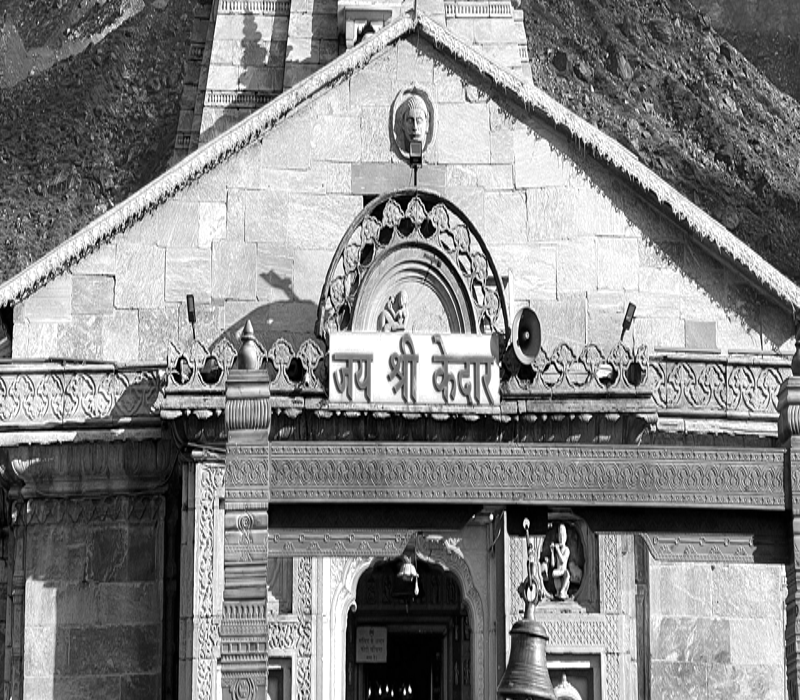- Offices: Dehradun | Dwarka New Delhi
Nestled amidst the picturesque beauty of the Garhwal Himalayas in Chamoli district of Uttarakhand, Hemkund Sahib is a place of profound spiritual significance for Sikhs. Situated at an elevation of approximately 4,633 meters (15,200 feet), it is one of the highest Gurudwaras (Sikh place of worship) in the world. The serene and sacred location draws pilgrims from all over the world seeking spiritual solace and divine blessings.
In this article, we embark on a journey to explore the historical and religious importance of Hemkund Sahib, the natural splendor of its surroundings, the spiritual experiences it offers to devotees, the challenges and logistics of the pilgrimage, and the cultural significance of this revered destination.
Historical and Religious Significance:
Hemkund Sahib holds immense historical and religious significance in Sikhism. According to Sikh tradition, Guru Gobind Singh, the tenth Sikh Guru, meditated at Hemkund Sahib in his previous incarnation as Guru Nanak Dev Ji. The sacred lake, Hemkund, is believed to be the site where Guru Gobind Singh Ji, in his meditative state, discovered the spiritual power to become one with the Divine.
The name "Hemkund Sahib" is derived from "Hem" (snow) and "Kund" (bowl or lake), perfectly describing the crystal-clear glacial lake that rests at the site. The word "Sahib" is an honorific term used to address a Sikh shrine.
The historical roots of Hemkund Sahib are mentioned in "Bachitar Natak," an autobiographical poem composed by Guru Gobind Singh Ji himself, chronicling the battles and spiritual journey of the Sikh Gurus.
In addition to its Sikh significance, Hemkund Sahib also has a Hindu connection. The nearby valley of flowers is associated with the Hindu goddess, Parvati. According to Hindu mythology, she meditated in this region to attain Lord Shiva as her consort.
The Spiritual Experience:
The journey to Hemkund Sahib is a spiritually enriching experience for devotees. Surrounded by majestic snow-capped peaks, lush green meadows, and colorful wildflowers, the site emanates an aura of tranquility and divinity.
The pilgrimage to Hemkund Sahib usually starts from the base town of Govindghat. Pilgrims trek a distance of approximately 19 kilometers, passing through picturesque villages like Ghangaria and enduring challenging terrains. The path to Hemkund Sahib is a test of physical endurance, making it a symbolic representation of the spiritual journey one must undertake to attain enlightenment.
As devotees approach the Gurudwara, they are welcomed by the melodious recitation of Gurbani (Sikh scriptures) and the soothing sound of the sarovar (holy lake). The Hemkund Sahib Gurudwara, with its pristine white facade, stands in stark contrast to the rugged mountainous backdrop, creating a surreal and spiritually uplifting ambiance.
Devotees are encouraged to take a dip in the sacred lake, which is believed to cleanse the soul and bestow divine blessings. The Guru Granth Sahib, the holy scripture of Sikhism, is recited in the Gurudwara, filling the air with divine vibrations and a sense of inner peace.
The practice of "Langar" (community kitchen) is an integral part of the Hemkund Sahib experience. Devotees and volunteers come together to partake in a communal meal, regardless of their social status, caste, or creed. The spirit of equality and selfless service reflects the core values of Sikhism and fosters a sense of unity among all visitors.
The Pilgrimage Challenges and Logistics:
The pilgrimage to Hemkund Sahib is not without its challenges. The trek is physically demanding, especially for those unaccustomed to high altitudes. Pilgrims are advised to prepare well in advance and maintain good physical fitness. Additionally, it is essential to acclimatize oneself to the altitude gradually to avoid altitude sickness.
The pilgrimage season generally starts in May and lasts until October, when the weather is more favorable for trekking. During the monsoon season, the region experiences heavy rainfall, which may lead to landslides and disrupt the trekking routes.
To facilitate the pilgrimage, the local authorities and Gurudwara management set up basic accommodation facilities along the route. Ghangaria serves as a crucial base camp for pilgrims, providing places to rest and rejuvenate before the final ascent to Hemkund Sahib.
Cultural Significance:
Hemkund Sahib exemplifies the cultural diversity and unity of India. Devotees from different regions, speaking various languages, come together to seek spiritual blessings and immerse themselves in the teachings of Guru Nanak Dev Ji and Guru Gobind Singh Ji. The Gurudwara fosters a sense of brotherhood, promoting the principles of equality, service, and compassion for all.
The pilgrimage also showcases the traditional and hospitable culture of the local people, who extend their warm welcome to the devotees. The humble offerings of food, shelter, and assistance are a testament to the rich cultural heritage of the region.
Conclusion:
Hemkund Sahib in Chamoli, Uttarakhand, is a testament to the devotion and resilience of pilgrims who undertake the arduous journey to seek spiritual enlightenment and connect with the divine. This sacred pilgrimage site, surrounded by the pristine beauty of the Garhwal Himalayas, offers a unique blend of natural splendor and spiritual solace. The Gurudwara's message of equality and service resonates with visitors from all walks of life, leaving an indelible mark on their hearts. Hemkund Sahib stands as a symbol of India's rich cultural heritage, where people come together to seek unity, peace, and harmony.

